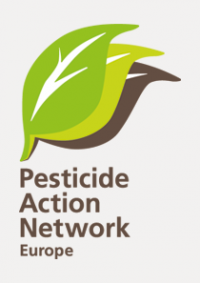The current levels of glyphosate use in Europe have resulted in widespread contamination of the environment, with the herbicide being detected in human urine, house dust, soils, and surface waters. Scientific evidence indicates that the concentrations of pesticides, including glyphosate, found in the environment negatively impact the quality of our water resources and put aquatic ecosystems at risk. According to EU pesticide legislation, the use of pesticides should not have any adverse impacts on human and animal health or the environment, in that the approval process for pesticides and their “sustainable use” should cause no harm, including to biodiversity and ecosystems. This study challenges the validity of this assumption by demonstrating it to be wrong.
In order to raise awareness about the extensive pollution resulting from the current utilisation of glyphosate-based herbicides in Europe, the Pesticide Action Network Europe, along with its members and the Stop-Glyphosate Coalition, conducted a water sampling exercise across 12 EU countries in October 2022, in the period immediately following the agricultural season. Organisations from these 12 countries sampled 23 flowing freshwater (rivers/streams) and five lake samples.
The samples were analysed for glyphosate and for its metabolite AMPA, and the limit of quantification was set at 0.2 μg/L (LOQ).
Glyphosate and/or AMPA were detected in 17 out of 23 samples (74%), in 11 out of the 12 countries. Considering that the drinking water safety limit for pesticide active substances and their relevant metabolites is 0,1 μg/L, five out of 23 water samples (22%), collected in Austria, Spain, Poland, Portugal, contained glyphosate at levels not suitable for human consumption. A Portuguese sample contained 3 μg/L glyphosate, which is 30 times higher than the safety limit for human consumption. In Austria, Belgium, Poland, Spain and Portugal, samples showed concentrations of glyphosate or AMPA above 1 μg/L. Alarmingly, three of the samples contained AMPA levels exceeding 3 μg/L.
Both glyphosate and AMPA pose risks to the aquatic environment, and glyphosate is already classified as being toxic to aquatic life with long-lasting effects (Aquatic Chronic 2; H411). However, based on the data from the scientific literature, a stricter classification would be justified. Currently, there is no environmental quality standard (EQS) for glyphosate or AMPA at the EU level. In its recent proposal, the European Commission revised the list of priority substances for surface water and included an extremely high EQS value for glyphosate which would allow a higher level of contamination compared to the drinking water safety standards. In the same proposal, a threshold limit of 0.5 μg/L (AA-EQS - Annual Average of Environmental Quality Standard) is included for the combined concentration of pesticide active substances or relevant metabolites, degradation and reaction products. Yet, out of the 23 samples analysed, AMPA was found at levels equal to or exceeding the 0.5 μg/L threshold in 10 samples and glyphosate in one sample. At the time of writing, it is not yet defined by the Commission and EU member states whether metabolites such as AMPA, which pose a risk to the aquatic environment, would be included in this threshold limit.
These results underline that exposure to glyphosate is unavoidable emphasising the urgent need for EU-wide measures to eliminate this hazardous substance from our environment.
*Samples were taken in late October 2022, which is the end of the main growing season in many European countries*
